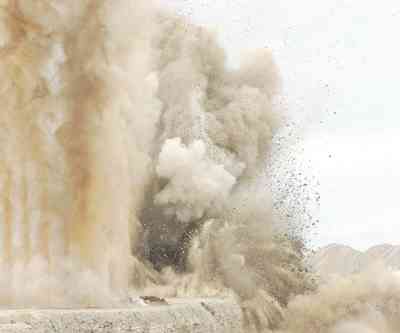
VANCOUVER, BRITISH COLUMBIA–(Marketwire – May 16, 2012) – CaNickel Mining Ltd. (“CaNickel” or the “Company“) (TSX:CML) reports that the Company has received a stop work order from Manitoba’s Workplace Safety and Health Division to cease blasting operations at the Company’s Bucko Lake nickel mine. The stop work order will be in effect until all known open voids have been backfilled, an independent engineer has reviewed the current mining plan and audited mining operations over the past 12 months according to that mining plan, and the Company revises the current mining plan in light of the audit and review.
The Company is fully cooperating with the governmental authority and is implementing measures towards lifting the stop work order. Moreover, as a consequence of weakening nickel prices and higher mining costs, experienced by the Company using cut and fill mining methods, financially sustainable mining operations are not currently possible. Therefore, the Company decided to also temporarily suspend its mill operations at Bucko Lake Mine. The Company will continue its efforts in optimizing the mining plans with application of long hole stoping method. A feasibility study will also be carried out on the M11A project where a diamond drilling campaign has just completed. A further update will be provided when the Company can estimate the expected period of the suspension to deal with the foregoing matters.
ABOUT CANICKEL
CaNickel Mining Limited is a Canadian junior mining company that owns and operates the Bucko Lake Nickel Mine near Wabowden, Manitoba. The Company also holds nickel, copper and Platinum Group Mineral (PGM) projects in the Thompson Nickel Belt and Sudbury Basin.
Advisory Respecting Forward-Looking Information
This press release contains forward-looking statements under Canadian securities legislation. Forward looking statements include, but are not limited to, statements with respect to statement of the timing to lift the stop worker and advise public whenever concrete information is available. Generally, forward-looking statements can be identified by the use of forward-looking terminology such as “plans”, “expects” or “does not expect”, “is expected”, “budget”, “scheduled”, “estimates”, “forecasts”, “intends”, “anticipates” or “does not anticipate”, or “believes”, or variations of such words and phrases or statements that certain actions, events or results “may”, “could”, “would”, “might” or “will be taken”, “occur” or “be achieved”. Forward-looking statements are based on the opinions and estimates of management as of the date such statements are made. Forward-looking statements are subject to known and unknown risks, uncertainties and other factors that may cause the actual results, level of activity, performance or achievements of the Company to be materially different from those expressed or implied by such forward-looking statements, including but not limited to those risks of the Company described in its annual information form that is available under its profile on SEDAR at www.sedar.com. Although management of the Company has attempted to identify important factors that could cause actual results to differ materially from those contained in forward-looking statements, there may be other factors that cause results not to be as anticipated, estimated or intended. There can be no assurance that such statements will prove to be accurate, as actual results and future events could differ materially from those anticipated in such statements. Accordingly, readers should not place undue reliance on forward-looking statements. The Company does not undertake to update any forward-looking statements, except in accordance with applicable securities laws.